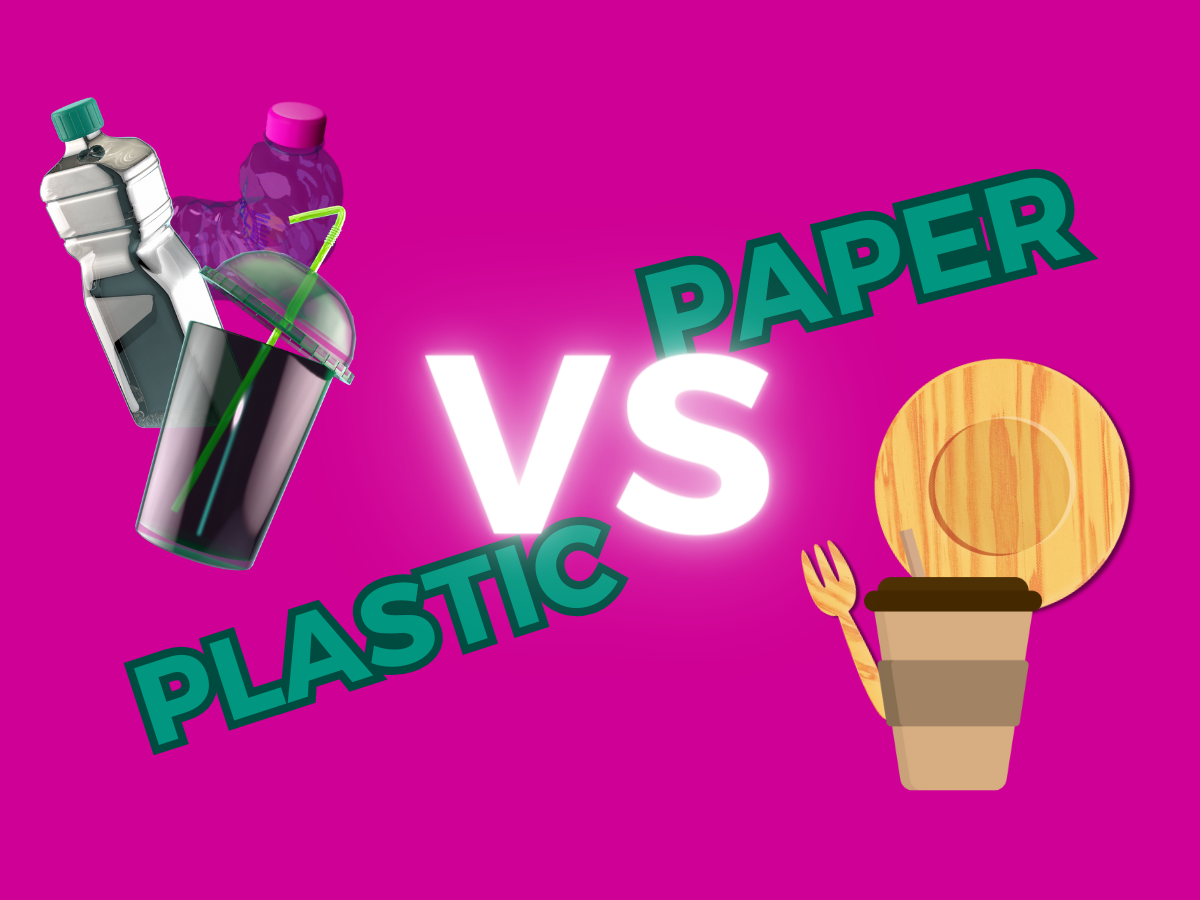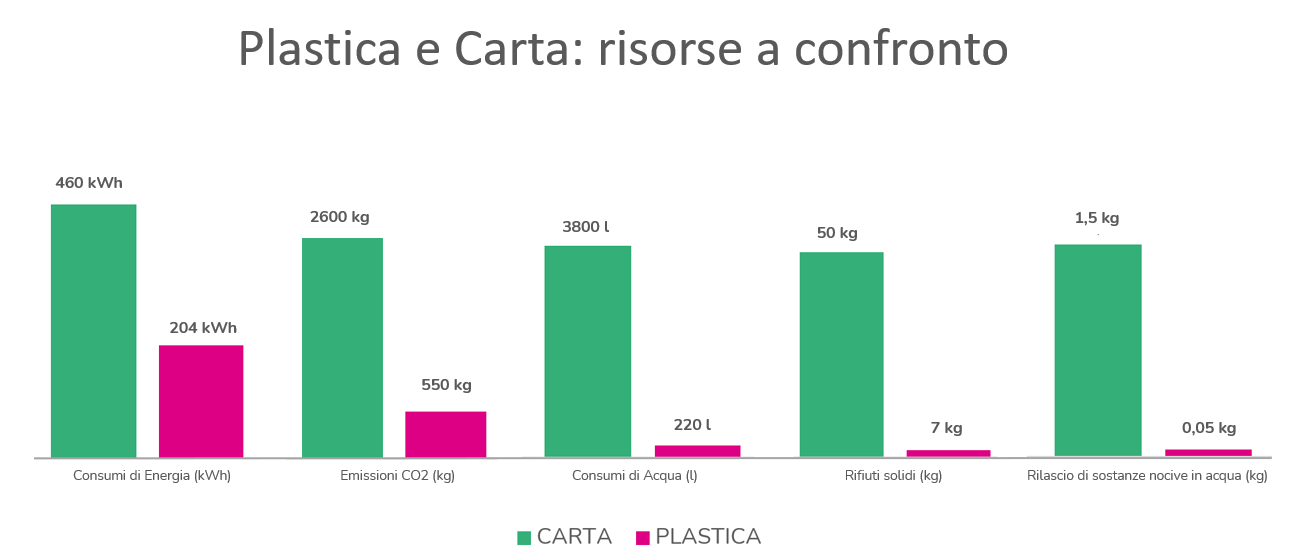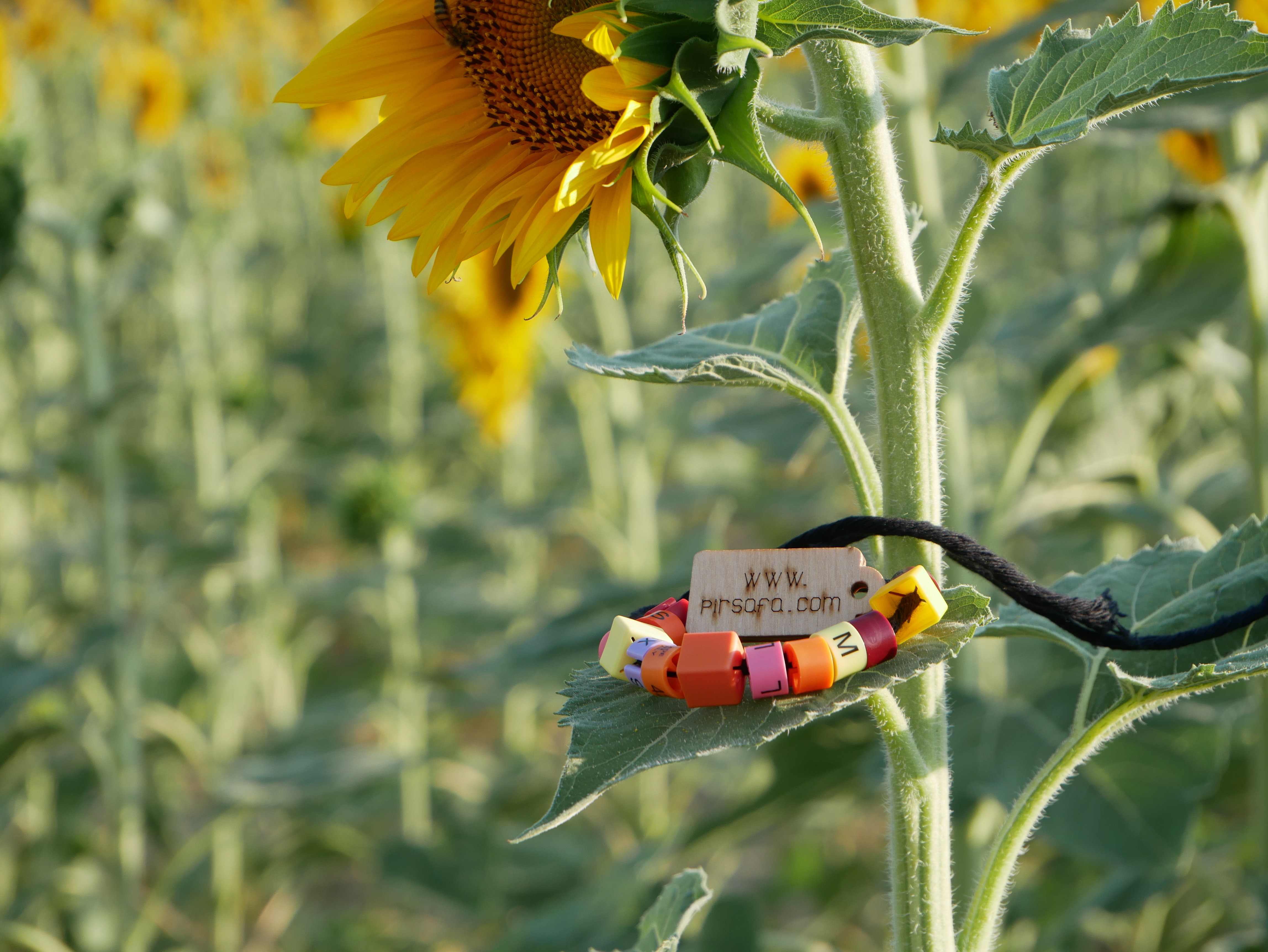Plastic vs. Paper: Sustainable Packaging Under the Investigative Lens
12/10/2023Plastic vs. Paper: Sustainable Packaging Under the Investigative Lens
In today's era, sustainability is at the forefront of many businesses and consumers' minds. However, common beliefs, when closely examined, can often prove surprisingly misleading.
A striking example is the notion that paper and cardboard are more sustainable options than plastic for packaging accessories in the fashion industry. In this article, we will explore an alternative perspective: how plastic, when processed and disposed of properly, can actually be more sustainable than paper or bio-plastics, which often pose disposal challenges.
The Myth of Sustainable Paper: How Many Times Can It Be Reused?
Paper is often considered an environmentally friendly choice, but this belief deserves a closer look. Many people believe that single-use paper, in the context of packaging products, is inherently sustainable, but the reality is more complex. Research conducted by the University of Bologna (in the project "Plastic and Paper: Comparing Resources") demonstrates that paper production requires significant amounts of energy, CO2 emissions, and water compared to plastic.
Compared to plastic processing, in paper production, we observe:
- Higher Resource Consumption: Cardboard production requires a significant amount of water, energy, and extensive forested land use. Plastic, on the other hand, demands fewer resources during production. According to a study by the German environmental organization "NABU", paper production accounts for 2.2% of global primary energy consumption and 4% of drinking water use. These data indicate that paper production is by no means a low-impact environmental practice;
- Release of Harmful Substances: Cardboard often undergoes bleaching and chemical treatments (involving chlorine), which can generate toxic waste and negatively impact water quality. The bleaching process can involve the use of harmful chemicals;
- Weight and Transportation: Plastic is lighter than cardboard, meaning it requires less fuel for transportation, reducing CO2 emissions;
- Recyclability: While plastic can be recycled, cardboard often has a shorter lifespan (it can be recycled only 5-7 times since fibers lose length and quality with each processing). Additionally, the recycling of single-use paper can be problematic due to ink and adhesive contamination, making reuse and efficient recycling difficult.
- Moisture Resistance: Plastic offers better protection against moisture compared to cardboard, reducing the risk of damage to accessories during transportation. Paper can be easily damaged by moisture or physical harm, leading to increased waste and damage in the supply chain. When it comes to fashion products, the need to protect garments from damage is essential, and paper may not be the best choice.
It's essential to consider the functionality of the accessory. Packaging serves various functions, including product protection, presentation, and branding. When choosing a material, consideration must be given to which functions it fulfills.
Would you ever make shoe soles out of cardboard?
Moreover, a report by the Food and Agriculture Organization (FAO) of the United Nations highlighted that the production of paper and cardboard is one of the main causes of deforestation, endangering ecosystems and contributing to climate change. According to a comparative study conducted by a team of researchers at the University of Manchester, sustainable plastic has a better overall energy balance than paper.
Bioplastics Disposal: What Are the Challenges?
Biodegradable or sustainable plastics, although considered as such, pose significant challenges related to disposal, which we have discussed in one of our previous blogs.
These "sustainable plastics" require specific conditions to degrade correctly, which are often unavailable in regular waste disposal systems.
Without these conditions, bio-plastics do not degrade or compost, nor are they more recyclable.
As a result, they can end up in landfills or incinerators, causing environmental problems.
When Is Plastic recyclable? The Importance of Proper Management
Plastic, if produced sustainably and processed efficiently, can actually have a lower environmental impact than paper.
Accessories made of plastic packaging can also be produced using recycled materials, reducing their environmental footprint.
However, it is essential that high-quality certified plastic is used upstream to ensure its purity. All of this is crucial to enable 100% recycling in subsequent stages.
If various polymers are mixed, recycling possibilities are inhibited.
As reiterated earlier, when handled responsibly, plastic is the most intelligent material available! This is why, at PIR.SA.FA., we have chosen to work with sustainable plastic over cardboard (which our machinery could easily process) for the reasons listed above.
We do not aim to diminish the importance of sustainable cardboard, but remember, appearances can be deceiving!
Conclusion
In summary, sustainability is not always about materials but how they are managed and disposed of.
Plastic, when used responsibly and recycled effectively, can offer significant ecological benefits over paper or bio-plastics. Unfortunately, recent advertisements have demonized the material rather than addressing the incorrect behaviors of individuals who mishandle it.
However, it is crucial for companies to commit to the responsible production and use of plastic and invest in innovative recycling solutions. In the end, the key to sustainability is wise resource and material management, regardless of the type of material used.
If you'd like to explore further sustainable packaging options, we invite you to visit our products page.
Here you can find a wide range of eco-friendly packaging solutions that will help reduce your brand's environmental impact.
For more information and to explore available options, please contact us at pirsafa@pirsafa.com or call us at +0861 23005. Some items are also already available in our online shop!
Il team PIR.SA.FA.
Instagram | Facebook | LinkedIn | pirsafa@pirsafa.com
Sizemarkers That Last a Lifetime: How to Extend Their Lifespan!
10/04/2024Sizemarkers for hangers are traditionally accessories made of plastic, intended to facilitate and speed up the size identification process, allowing for time savings and immediate product visualization. Plastic is known...
Metal Shirt Clips: Galvanizing and Invisible Risks
21/02/2024Dear Consumers, today, we want to address an important yet often overlooked topic in the textile industry: the harmful effects of galvanic coating on traditional metal shirt clips, and how...
A New Chapter: the FP logo registered by PIR.SA.FA. S.R.L.
06/02/2024A New Chapter: the FP logo registered by PIR.SA.FA. S.R.L. We are excited to share exciting and significant news: PIR.SA.FA. S.R.L. has officially registered the Italian trademark "FP".This is a...
General conditions
Privacy policy - Cookie policy - Cookies Settings - Powered by L&L Comunicazione - Admin

 FR
FR  IT
IT EN
EN ES
ES DE
DE

